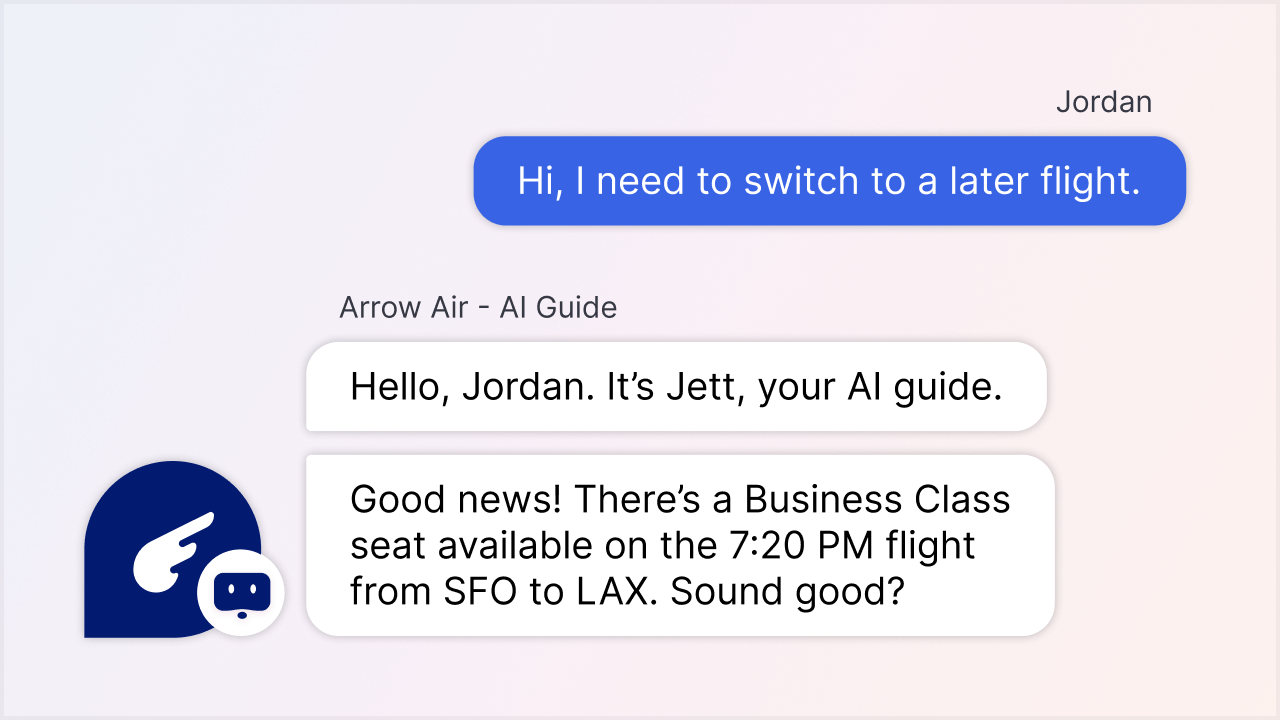Chatbots Unleashed: Transforming Customer Service and Marketing Dynamics

In the fast-paced realm of modern technology, integrating chatbots into your website is absolutely crucial. These chatbots, driven by the power of artificial intelligence, revolutionize the way businesses communicate with their customers. By providing round-the-clock assistance and efficiently handling basic queries, they significantly enhance customer satisfaction levels.
Furthermore, the implementation of chatbots enables marketers to redirect their attention towards more strategic endeavors, thereby optimizing operational efficiency. Thus, embracing chatbot technology facilitates how businesses engages with their customers, fostering better customer satisfaction.
Chatbots are incredibly effective at simplifying tasks. For instance, imagine you're chatting with a friend on a messaging app, planning to meet at a restaurant. With a chatbot, you can seamlessly make a reservation, get recommendations for popular dishes, and even book a cab without leaving the messaging platform. Isn't that incredibly convenient? That's why every business, no matter the field, should consider integrating a chatbot directly into their website.
In this blog, we are going to discuss how marketers can leverage chatbots and some of their use cases.

How are Chatbots used in Marketing
Chatbots in marketing are used to enhance customer interactions and to address any potential pain points in the customer journey, from acquisition to retention. This is done by answering general FAQs, addressing any subscription issues, technical difficulties or general solutions that a customer might be looking for.
Using chatbots also allows for a better data collection and personalization in terms of providing a service to customers. This data can then be used to build out more comprehensive and tailored strategies in order to maximize conversion.
Lead Generation
55% of businesses are already using chatbots to generate leads of high quality. Chatbots can interact with website visitors and engage with the audience to learn about their preference, interest and also collect data on their behavior. This allows marketers to understand where the user is on their customer journey, and how to develop various marketing initiatives and campaigns to facilitate the conversion process.
Chatbots can also recommend products customer would be interested in, thus assisting them to make the desired action, such as book a call, reserve a spot or even make a purchase.
Customer Segmentation
Using machine learning for text and sentiment analysis of chatbot interactions allows for a deeper understanding of customer demographics, online behavior, and past purchasing decisions. This insight enables the creation of highly personalized offerings, giving you a competitive edge by identifying and addressing market gaps more effectively.
Sales Support
Chatbot marketing can increase sales by proactively sending notifications about offers and discounts, thereby speeding up the purchase process. Some of the pain points that chatbots can overcome are:
- Lack of a 24/7 customer service communication channel
- Extended response times from live agents
- Inability to reach the call center
- Inappropriate behavior or conflicts with agents
In case there is a question that it cannot answer, the chatbot will create a support ticket that can be tracked and will be answered by available customer service agents.
Customer engagement
Chatbots can interact with customers through personalized conversations, keeping them informed about new products, promotions, and other marketing efforts. They can maintain customer interest using various engagement methods, such as sharing engaging videos and images related to the products and providing quick solutions.
Improved response time
It is crucial for brands to respond to customer inquiries promptly. Chatbots are highly efficient because they can manage a large volume of inquiries simultaneously. They provide instant responses without any delay, saving time and effort for both customers and agents. Additionally, chatbots can quickly deliver essential information such as order status, shipping details, and product specifications, improving response times and ensuring customers get the information they need swiftly.
How to create a chatbot marketing strategy
In order to create a successful chatbot marketing strategy, its important to know the following details such as, what your chatbot goal is, how is your audience, what actions do you plan your chatbot to facilitate, how are you going to measure the success and what workflows would you like in place.
Now that we’ve highlighted some of the important questions, lets go through the process, step by step,
Step 1: Define Your Goals and Use Cases
Start by clearly defining the challenges your business encounters and identifying how a chatbot can help resolve them. Set measurable objectives for the chatbot's performance.
For example, if you run an online newspaper agency and often receive unsubscribe or preference change requests, detail how your chatbot will manage these tasks. Determine which pages the chatbot will be active on and specify its functionalities in those contexts.
Step 2: Choose the right platform
Ensuring you select the right platform is essential because users across different platforms often have distinct preferences and types of questions. For example, if your target market comprises Gen Z or millennials, they are more likely to engage through Instagram DMs. This demographic has specific communication habits and expectations on this platform. Similarly, there are unique audiences on other platforms such as Twitter, Meta's Messenger, and more, each with their own preferences for interaction. Understanding these differences allows you to tailor your communication strategy effectively to meet the needs and expectations of each demographic group, ensuring better engagement and customer satisfaction.
Step 3: Building your chatbot content
This is a very important step when it comes to your chatbot marketing strategy, and your content is one of the factors that determines how good or bad your customer experience turns out.
A good starting point is always general FAQs, to include any additional information, it would be best to refer to internal teams such as customer service, sales, and marketing. Some organizations take it one step ahead by using websites such as quora and reddit to help gain more insights into what their existing and potential customers might be talking about.
This proactive approach ensures your chatbot can handle a wider array of inquiries with greater accuracy, ultimately leading to a better customer experience and higher satisfaction rates.
Step 4: Craft your Chatbots Voice and Opening Message
Developing a distinct voice and personality for your chatbot helps it appear more human-like. Some companies even give their bots a full-fledged identity, complete with emotions, to make interactions feel less mechanical and more personable.
Equally important is crafting a compelling and engaging opening message for customers. This initial interaction should ask questions to draw the user in. Additionally, make it clear that they are interacting with a bot, so customers can set their expectations appropriately.
Step 5: Mapping your Customer Journey and Response
Before developing your chatbot, it's crucial to map out potential questions and their responses. Start by listing possible questions or keywords and drafting suitable replies for each. This ensures your chatbot can handle user inquiries effectively.
Although this task can be difficult on paper, several tools can help streamline the process. For example, Sprout Social's Bot Builder offers an intuitive interface for designing chatbot interactions, and Google Drawings can be used to visually map out question-and-answer flows. These tools make it easier to organize and implement your chatbot’s logic, ensuring a more efficient development process.
Step 6: Building a Conversation Tree
This step builds on the previous one. After mapping out all possible responses, the next task is to create hypothetical conversations to explore different user interaction paths and determine how each one links to specific actions. It's crucial to invest time in this phase to ensure all conversation flows effectively address customer queries. If a conversation becomes too complex or overly specific, it should seamlessly transition to the "contact an agent" option as a last resort, ensuring a smooth and satisfying customer experience.
Finally, ensure that a call-to-action (CTA) function is included in every conversation, whether it involves unsubscribing, directing users to a product page, or other actions. Having a CTA encourages customers to take action or stay on the website longer. Using the right CTA in each conversation can lead to higher conversion rates and increased sales.
Step 7: Finally, Test, Publish and Monitor
Testing every aspect of your chatbot is crucial to guaranteeing its effectiveness. This includes ensuring smooth conversation flows, proper recommendation of desired CTAs, uninterrupted 24/7 operation, seamless data collection, and more. Once testing is complete, it's time to publish your chatbot and monitor its performance regularly to ensure continued effectiveness and smooth operation.
In the ever-evolving world of customer service and marketing, chatbots are the trusty sidekicks we didn't know we needed. They're like the reliable friends who never sleep, always there to lend a hand (or a byte) whenever we need them. From handling routine inquiries to freeing up our time for more exciting tasks, chatbots are the unsung heroes of the digital age.
So, let's dive in, put our plans to the test, and watch as our chatbots pave the way to success, one conversation at a time!
And as always, Stay tuned and subscribe to stay updated with the ever-changing landscape of Marketing!




